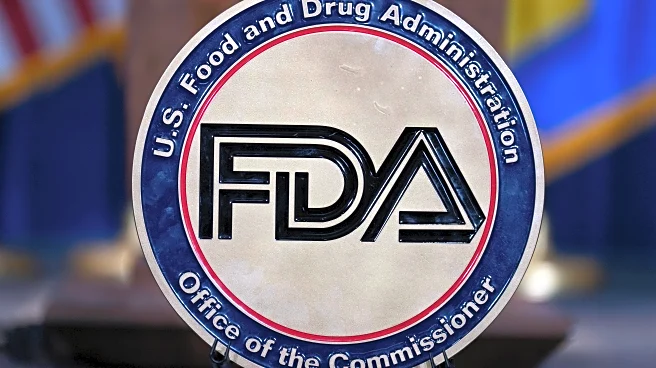What's Happening?
Cinnamon, a popular spice known for its warm and sweet flavor, is celebrated for its potential health benefits, including brain-boosting and antibacterial properties. Studies suggest that cinnamon may
improve brain function and reduce cognitive impairment due to its antioxidant, anti-inflammatory, and anti-amyloid properties. Additionally, cinnamon has been found to slow or stop the growth of bacteria, particularly those causing yeast infections like E. coli and Candida. The primary active compound, cinnamaldehyde, enhances the effectiveness of certain antibiotics in lab settings. Despite these benefits, cinnamon contains coumarin, a toxin linked to severe liver damage. Ceylon cinnamon, or 'true' cinnamon, has lower levels of coumarin compared to cassia cinnamon, which is more commonly used due to its lower cost. The US Food and Drug Administration has banned pure coumarin as a food additive, although it allows its presence in foods and beverages from natural sources like cinnamon.
Why It's Important?
The health benefits of cinnamon, particularly its potential to improve brain health and fight bacterial infections, are significant in the context of public health and nutrition. Cinnamon's ability to lower blood sugar and cholesterol levels is particularly beneficial for individuals with Type 2 diabetes, offering a natural way to improve insulin sensitivity and reduce triglycerides. However, the presence of coumarin in cinnamon poses health risks, including liver damage, low blood sugar, gastrointestinal distress, and mouth sores. This highlights the importance of consumer awareness regarding the type and quantity of cinnamon consumed. The FDA's regulation of coumarin underscores the need for careful monitoring of food additives to protect public health.
What's Next?
Consumers are advised to limit their cinnamon intake to up to half a teaspoon a day, as recommended by the US Department of Agriculture, to avoid potential health risks. The ongoing research into cinnamon's health benefits and risks may lead to further regulatory actions or consumer guidance. As awareness of the differences between Ceylon and cassia cinnamon grows, there may be increased demand for the safer, albeit more expensive, Ceylon variety. This could influence market trends and pricing in the spice industry.
Beyond the Headlines
The discussion around cinnamon's health benefits and risks reflects broader themes in nutrition and food safety, including the balance between natural remedies and potential toxicity. It also highlights the role of regulatory bodies like the FDA in safeguarding public health through food additive regulations. The cultural significance of cinnamon, particularly in autumn and holiday traditions, adds another layer to its popularity and consumption patterns.












